
Sign of the Times?
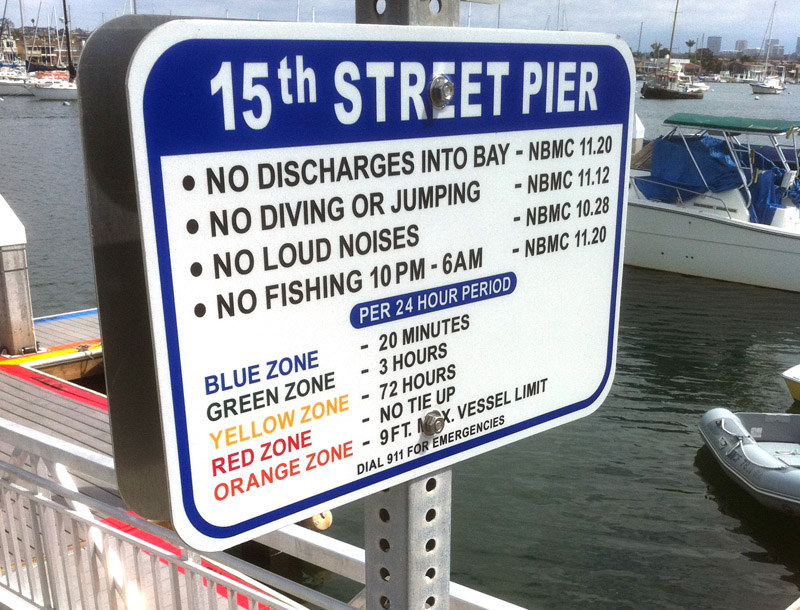
Reader Dwight Witherspoon of the Islander 36 Surfseaker sent us a photo of a sign posted at the dinghy/fishing dock at 15th St. in Newport Beach. We assume that there are similar signs at the other dinghy/fishing docks around Newport Harbor.
Dwight’s comment is, "Newport Harbor docks required changes, but this is too much!"
That’s an understandable immediate reaction. But with all due respect, in our opinion it’s simply an example of local officials trying really hard to meet all the various and competing needs and interests of people in a region that has become grossly overpopulated for the amount of water access.
With respect to the ‘zones’, we understand the need for all of them. You need the red so people have a place to fish, you need yellow so liveboards who are going to be gone for a few days have a place to leave their dink, you need green for folks on boats who want to go out to dinner or shop and do laundry, and you need blue for folks who only need to dash to their car or pick people up. If there weren’t different zones for different purposes, you’d have 72-hour people taking over the place to the exclusion of folks who only need to go to shore for 20 minutes or three hours — or vice versa. It’s not going to work out perfectly, but there’s no way to please everyone all of the time.
Two things strike us as odd. First, shouldn’t there be a 13-ft limit on the maximum size dinghy to tie up at a such a dock? It’s aggravating to us when somebody in a honking-big 20-ft inflatable with two big outboards takes up an entire zone. Second, how can folks tie up for 72 hours in a 24-hour period? But yeah, we’re just picking nits.
We were lucky enough to spend three months of the winter in Punta Mita and other parts of coastal Mexico, and almost as much time in St. Barth, so we’ve gone a winter without crowd issues and without the need for a billion rules about every little thing. As we said, we understand the need for many of the rules in overcrowded places such as California, but the sense of personal freedom is so much greater in less-crowded coastal Mexico and the islands of the Caribbean.
You want to jump or dive off a dock in either place? Nobody’s going to stop you. You want to yell and scream. Within reason, nobody is going to care. And you can fish all through the night.
Further, U.S. officials would be horrified at what passes for ‘boating safety’ in places like the Caribbean. Hardly anybody except infants wears lifejackets, and it’s commonplace to see things life six pre-teen girls on the bow of a small powerboat sitting outside the pulpit, legs over the side. It’s not a hard and fast rule, but in the United States, the government tries to protect people from themselves, while in most of Mexico and the Caribbean, you’d better take care of yourself because nobody else will. We’re not saying one system is better than the other, but we do know whose kids grow up more adventurous and self-sufficient. And we know that at this stage in our life, fewer people and more freedom is our personal preference.
Petaluma or Bust
As any sailor knows, approaching a bridge with a relatively low — but doable — clearance can really get your blood pumping. Even if the chart indicates you’ll have 20 feet of clear air between the top of your mast and the bridge, from deck level it always looks like you’re headed straight for a dismasting. So imagine the cojones it takes to plan a trip under a bridge with 70 feet of clearance (at mean high water) when your mast sticks up 71 feet! That’s just what Laurie Chaikin and her crew did last month when they took a trip to Petaluma on her Leopard 45 Charleette II.
"After careful study of tides and discussions with other boats and the harbormaster, we decided to attempt the trip," explains Laurie. "My first mate, Ron Taillon, and I measured from the tip of the mast (including the light and windmeter) to water level: 71 feet. We filled the water tanks — 256 gallons gave us three extra inches — invited a few heavy guests, and motorsailed to the mouth of the river, arriving at low tide.
"Once we neared the bridge, we ‘put on the brakes’ and literally inched forward. The crew posted astern watched with binoculars to make sure we didn’t hit. Everyone had already been informed that we’d abort and head elsewhere if it didn’t seem safe, but we made it under with five feet to spare. Afterward, I required some medicinal alcohol!"
But the crew of Charleette couldn’t relax quite yet. They still had two more 70-ft obstacles to navigate: an overhead cable and another bridge. And all of this was being done at low tide, so the possibility of running aground was very real. "With a 4.5-ft draft, though, I wasn’t so concerned," said Laurie. As it turned out, Charleette navigated the obstacle course perfectly, and her crew were able to finally breathe again once tied up in the turning basin.
"Overall, it was a worthwhile, successful adventure full of learning — boating skills, problem solving, maneuvering — as well as going to new places close to home," reflects Laurie. "Would I do it again? Yes, but not until my heart rate slows back down, which could take a few months!"
What Ever Happened to Pedro Miguel?
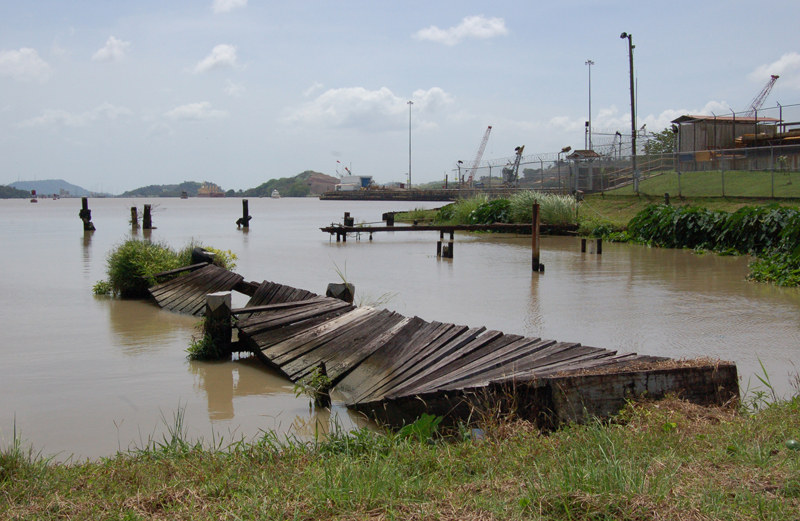
©2011 Latitude 38 Media, LLC
After operating for nearly 70 years as a favorite stopover for world cruisers transiting the Panama Canal, the nonprofit Pedro Miquel Boat Club was forcibly closed down several years ago by the Panama Canal Authority. Buildings were boarded up and surrounding fences were chained shut. The club lay just a stone’s throw from the Canal’s Pedro Miguel Locks, and former tenants were told that the Authority had important plans for the site which precluded the continued operation of the club and its adjacent boatyard.
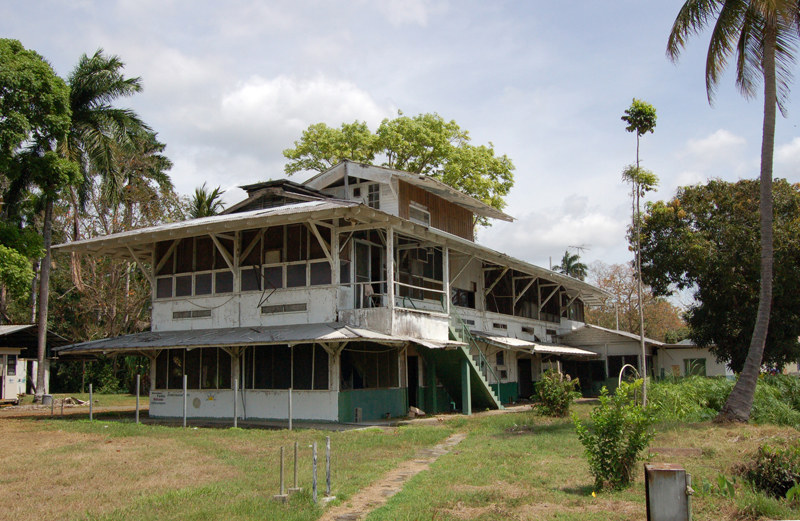
©2011 Latitude 38 Media, LLC
On our recent trip to Panama we checked out the property to see what progressive new developments were taking place. Sadly, we found that no improvements have been made. Instead, the formerly vibrant facilities are being silently decomposed by tropical decay.
It’s obvious to the local boaters we interviewed that the shutdown was more political than practical. Apparently the closure was simply an effort to purge yet another remnant of the U.S.’s control of the Canal Zone — a process that’s been ongoing ever since President Jimmy Carter transfered ownership of the Zone back to the Panamanian government (by way of General Torrijos) in 1977.
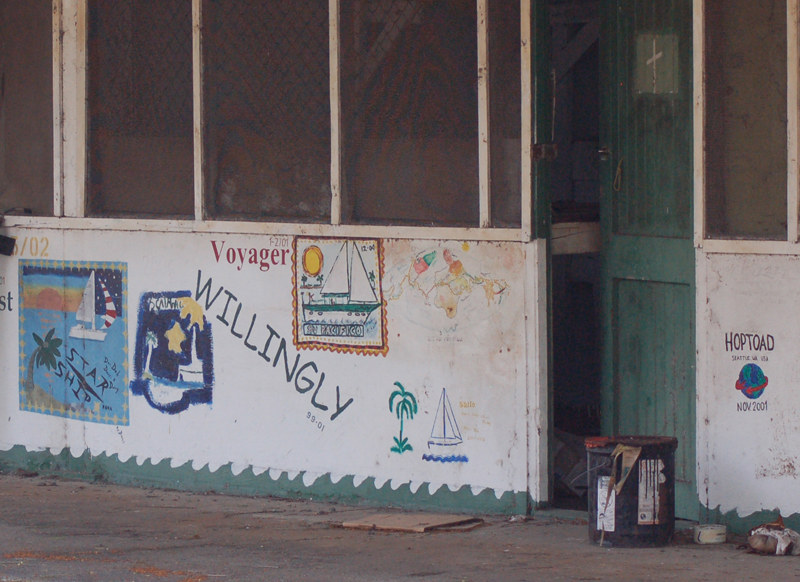
©2011 Latitude 38 Media, LLC
Since the mid-’30s the club had been a friendly place for world cruisers to work on their boats, and tenants had actively supported charitable causes within the Panamanian community. The closure marked the end of an era which is not likely to be replicated anywhere else along The Ditch. So today, as the crumbling buildings and a few abandoned boats slowly fade away, all that remains of value are the many happy memories held by sailors all over the world.
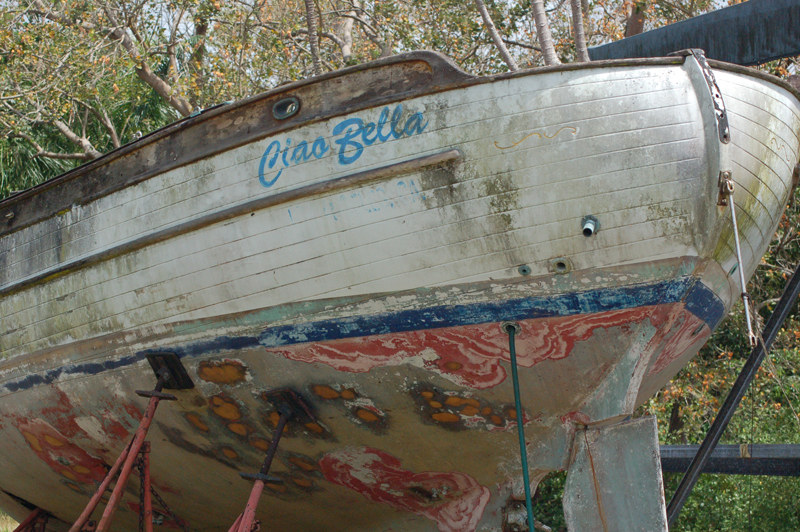
©2011 Latitude 38 Media, LLC
AT – panama murder
name: Zechariah Kjaer-Olsen
email: [email protected]
message: i just had a look at one of your articles on the murder of my father Bo Kjaer-olsen—-
More on Panama Murder
July 16, 2010 – Pedregal, Panama—-http://www.
it makes me sad to know that there are so many web sites that do not investigate before posting information especially sensitive information such as the murder of my father i do not understand is it because your web site does not care if the info is correct or not on every web site i go to it all has the vary same exact incorrect information it seems that all that is done is copy paste copy and paste i wold like to think highly of Latitude 38 i have read the magazine many times in the past but to look at this it only makes me think how much of what is written is true or is it all just copy and paste from other web sites i am not angry i am just sad from all this especially from your web site Latitude 38 pleas go to this link to see what has been going on http://www.chiriquichatter.
